Giant Whisper
Multi-layered Sonic Landscape
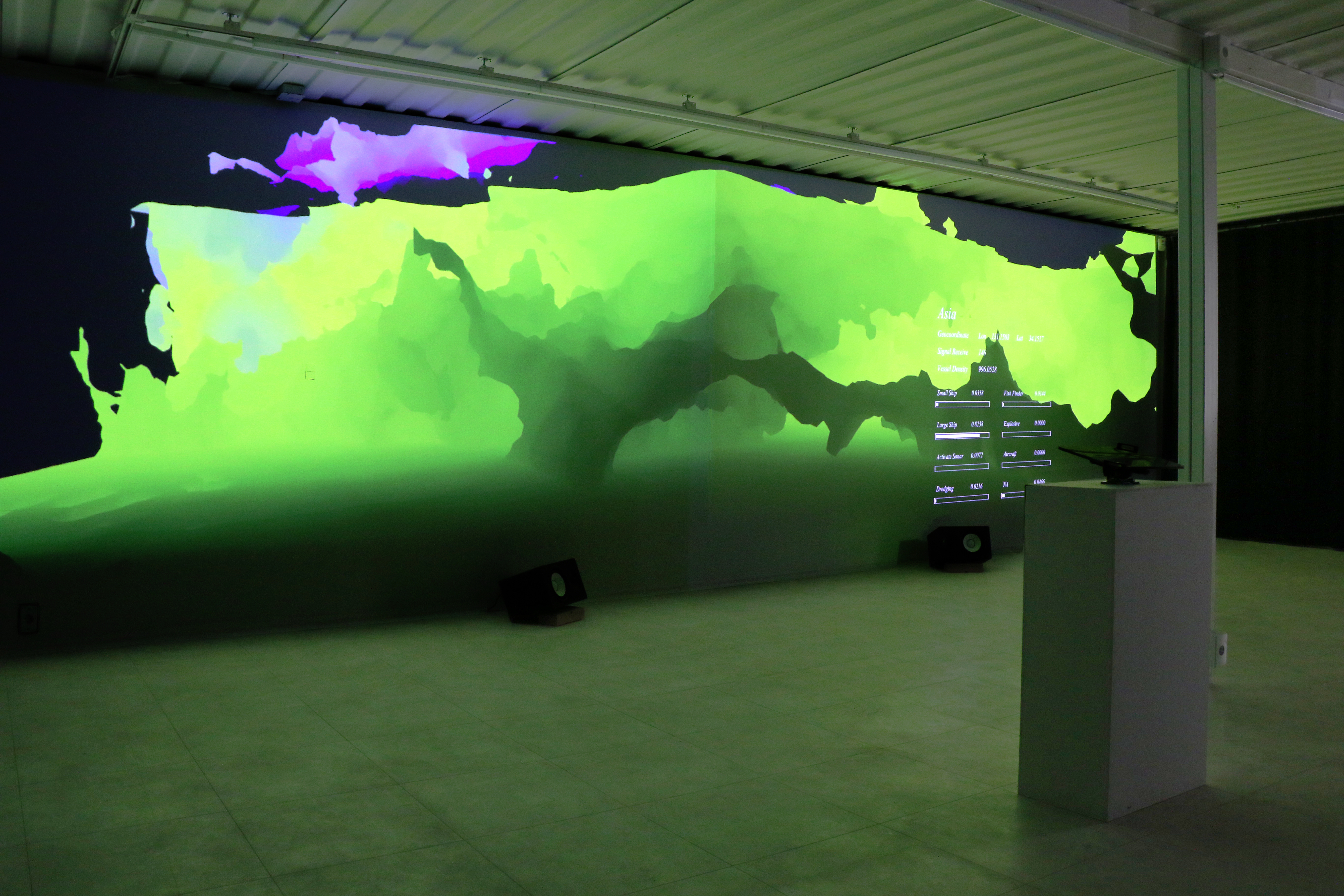


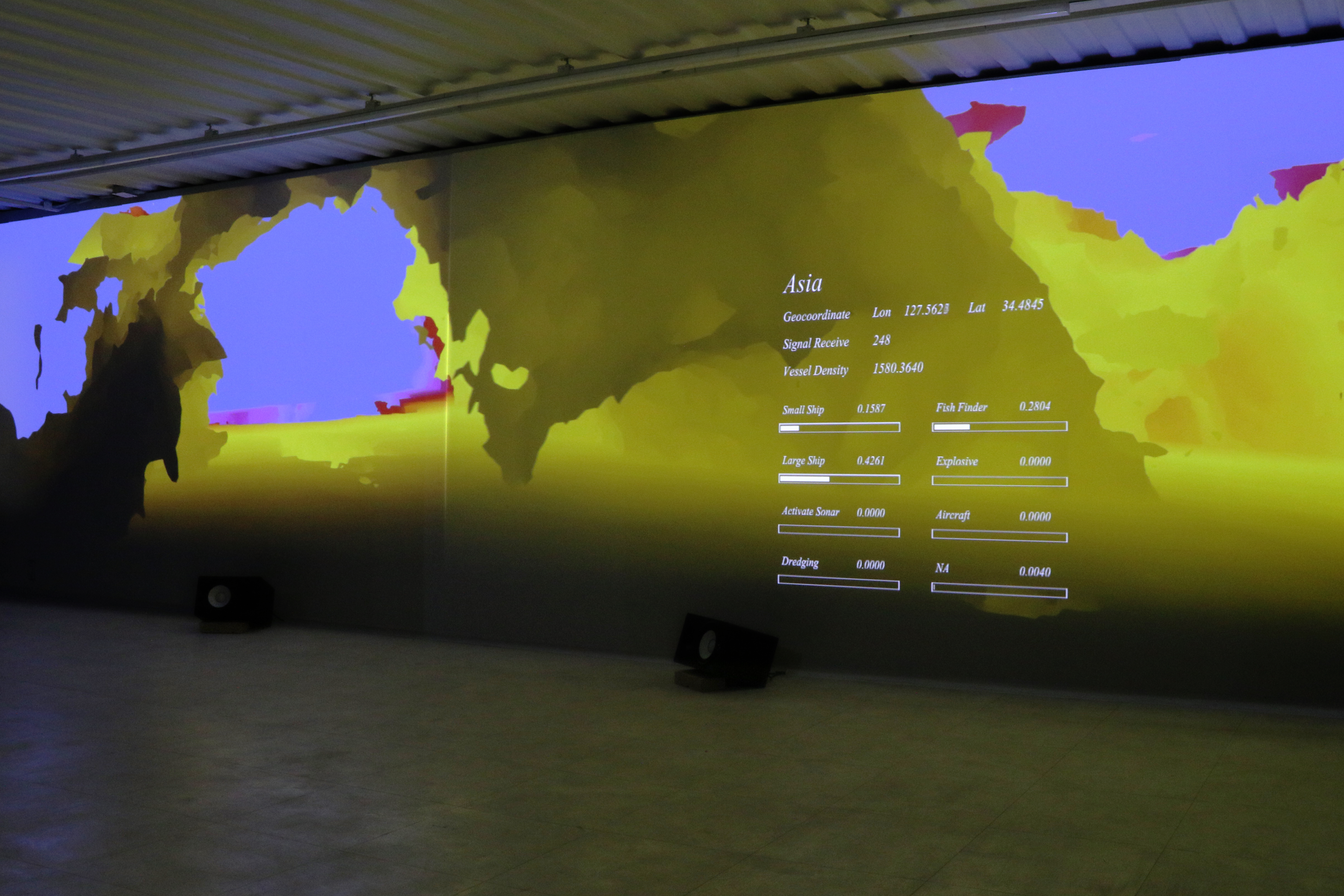
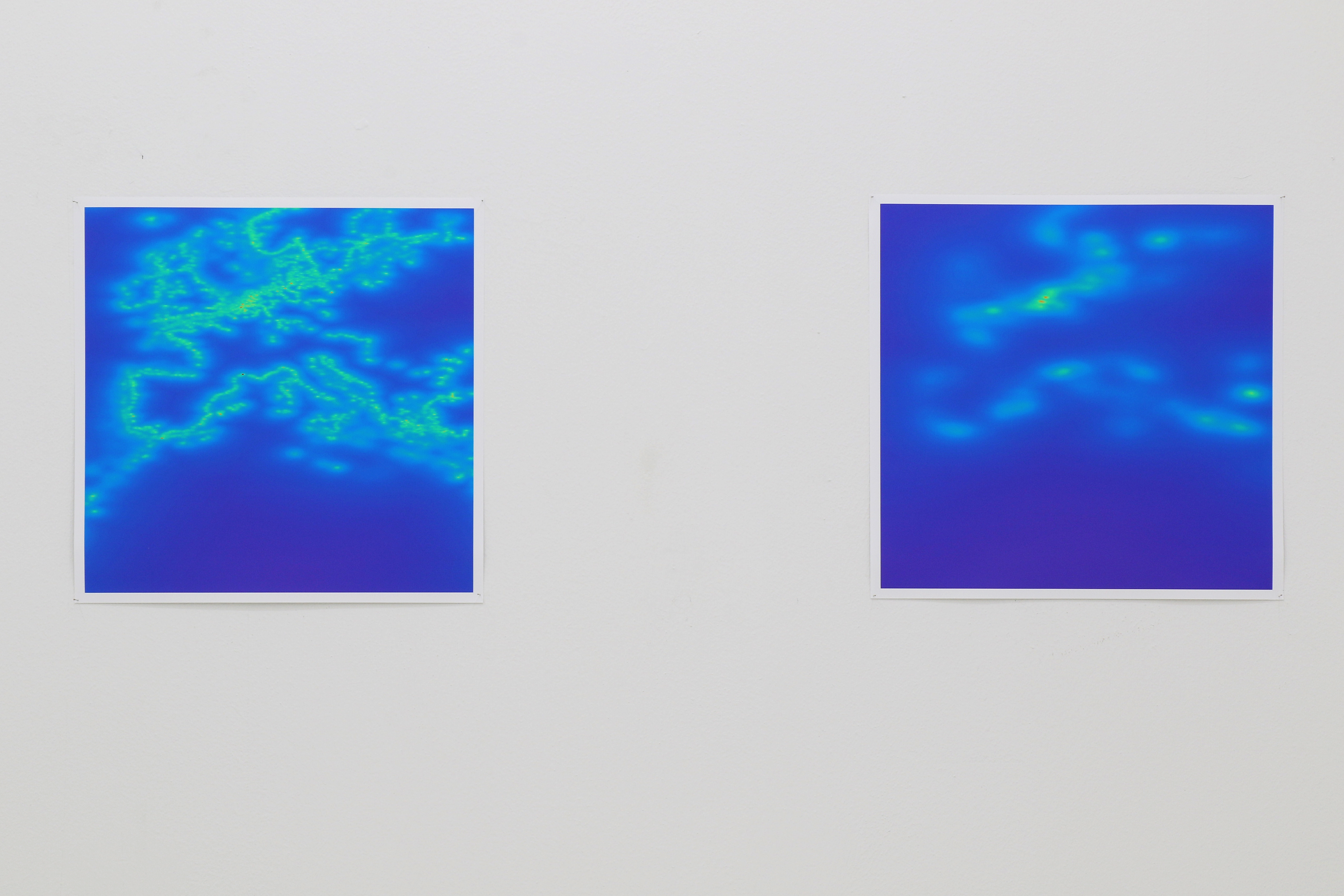
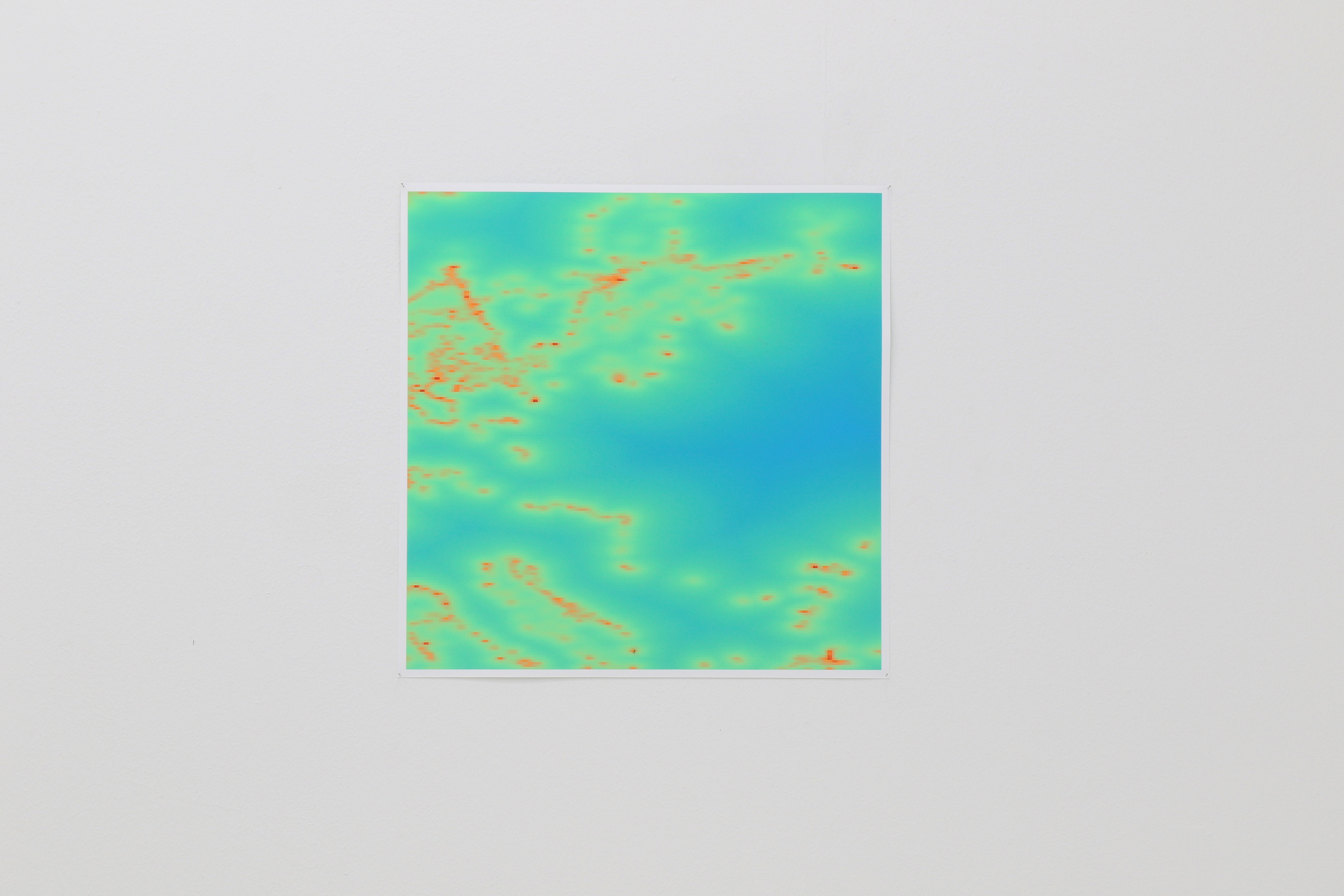
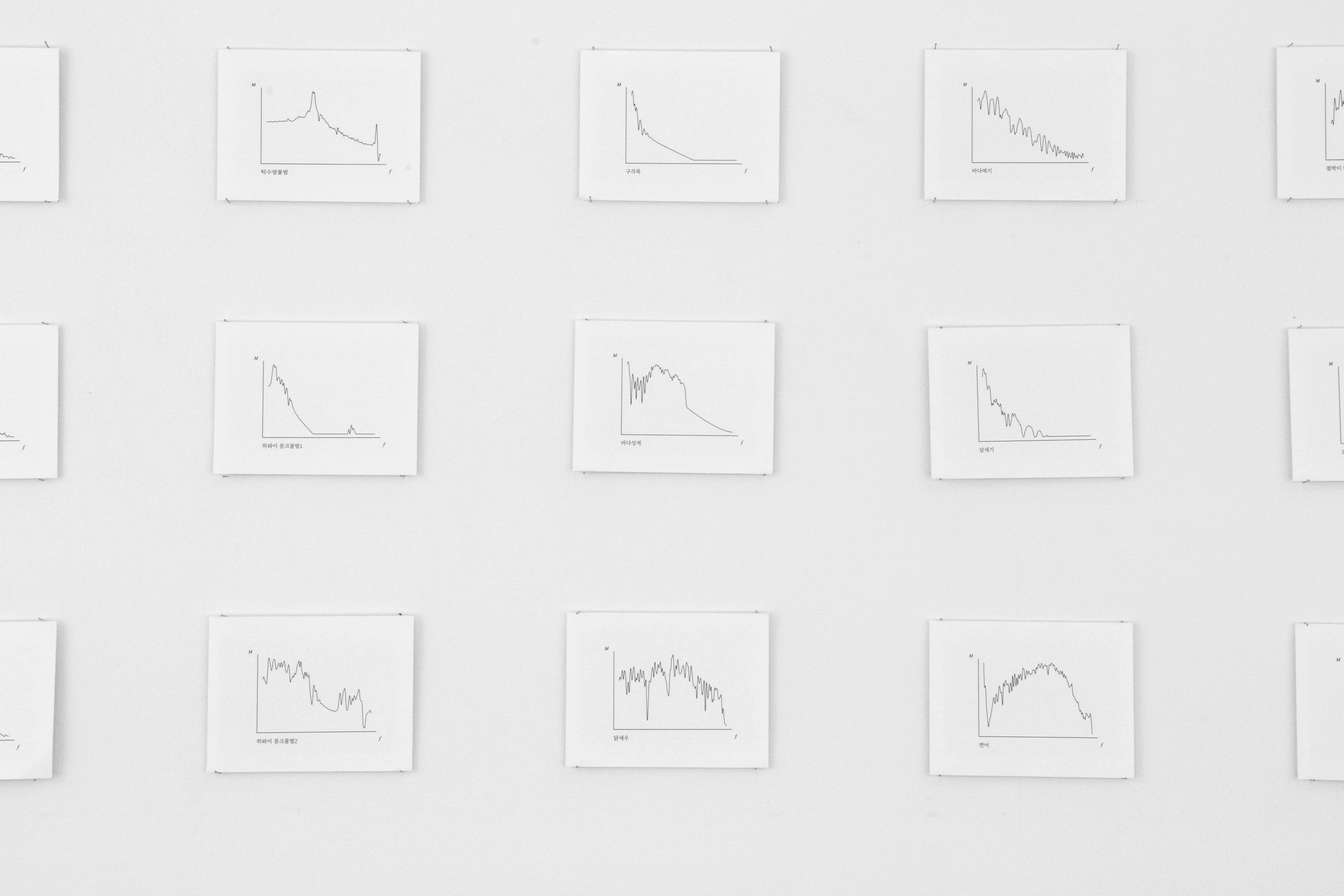
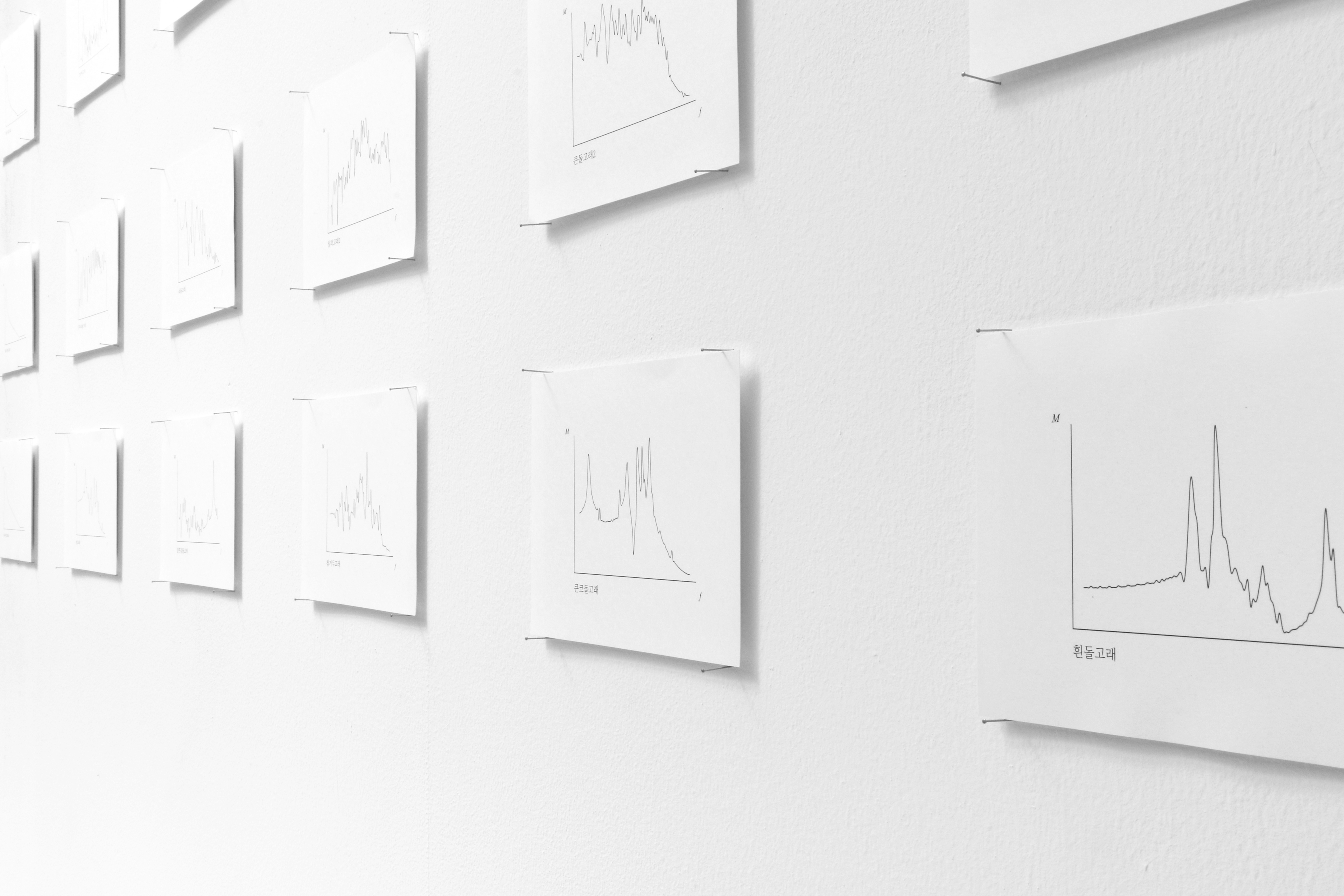
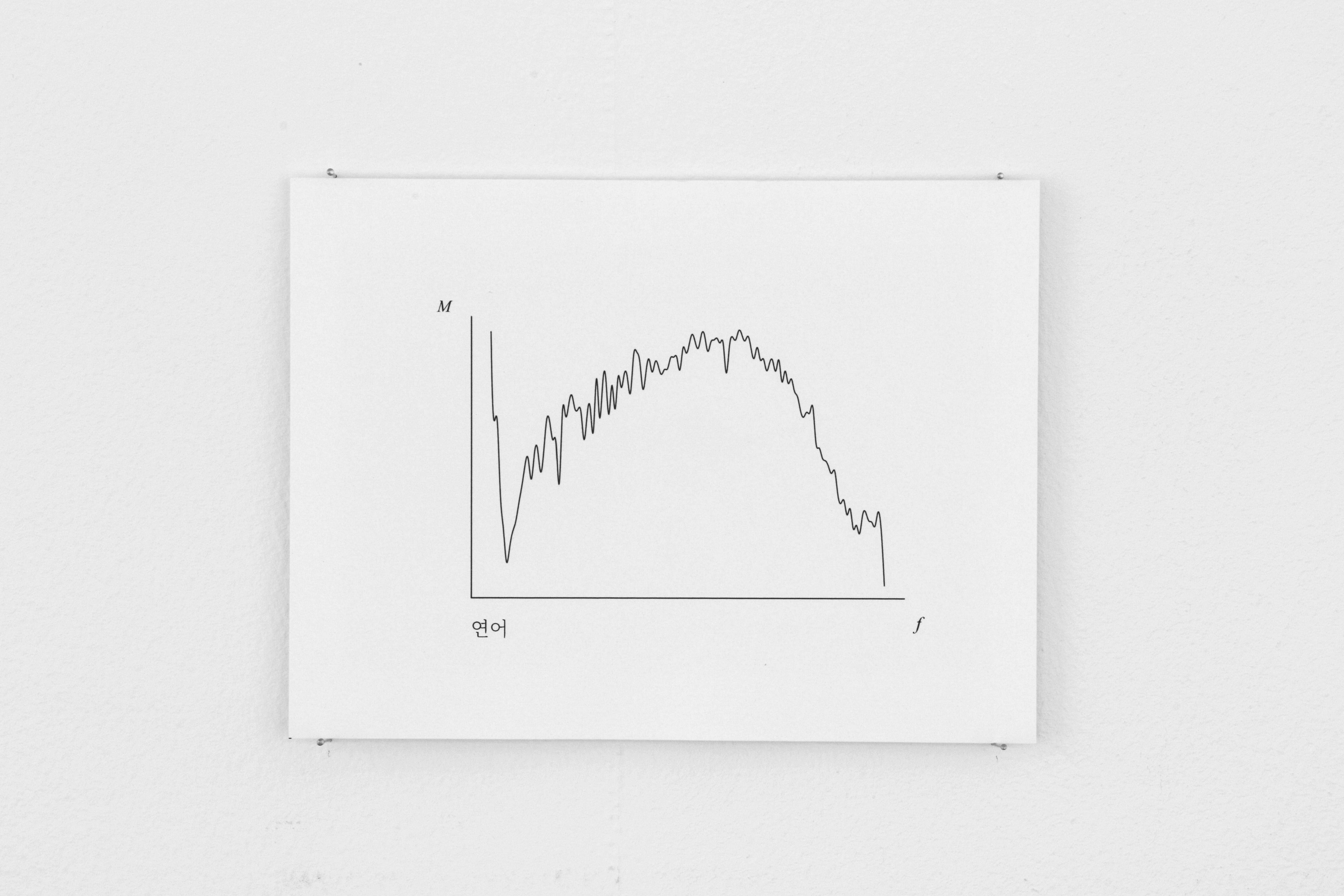
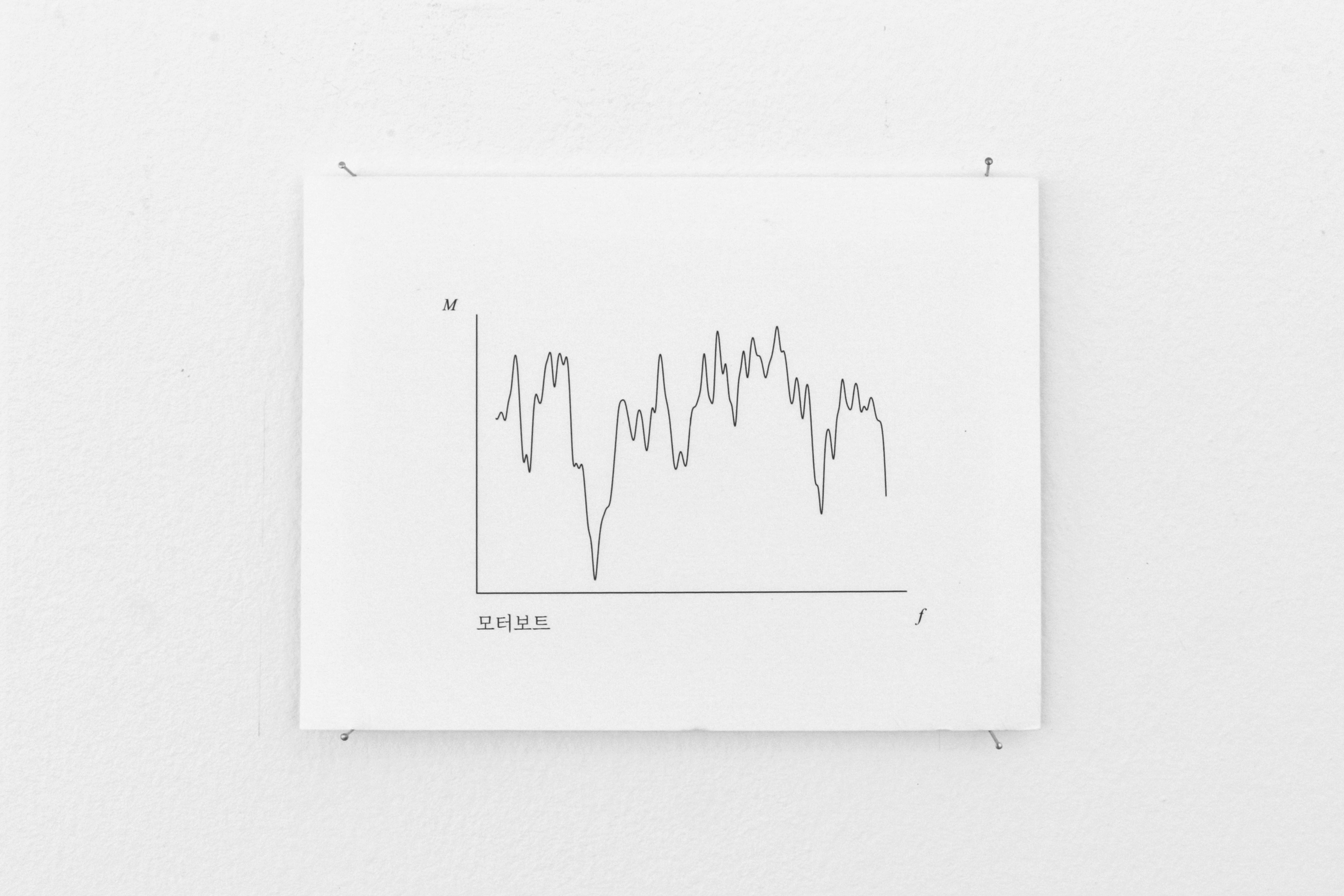
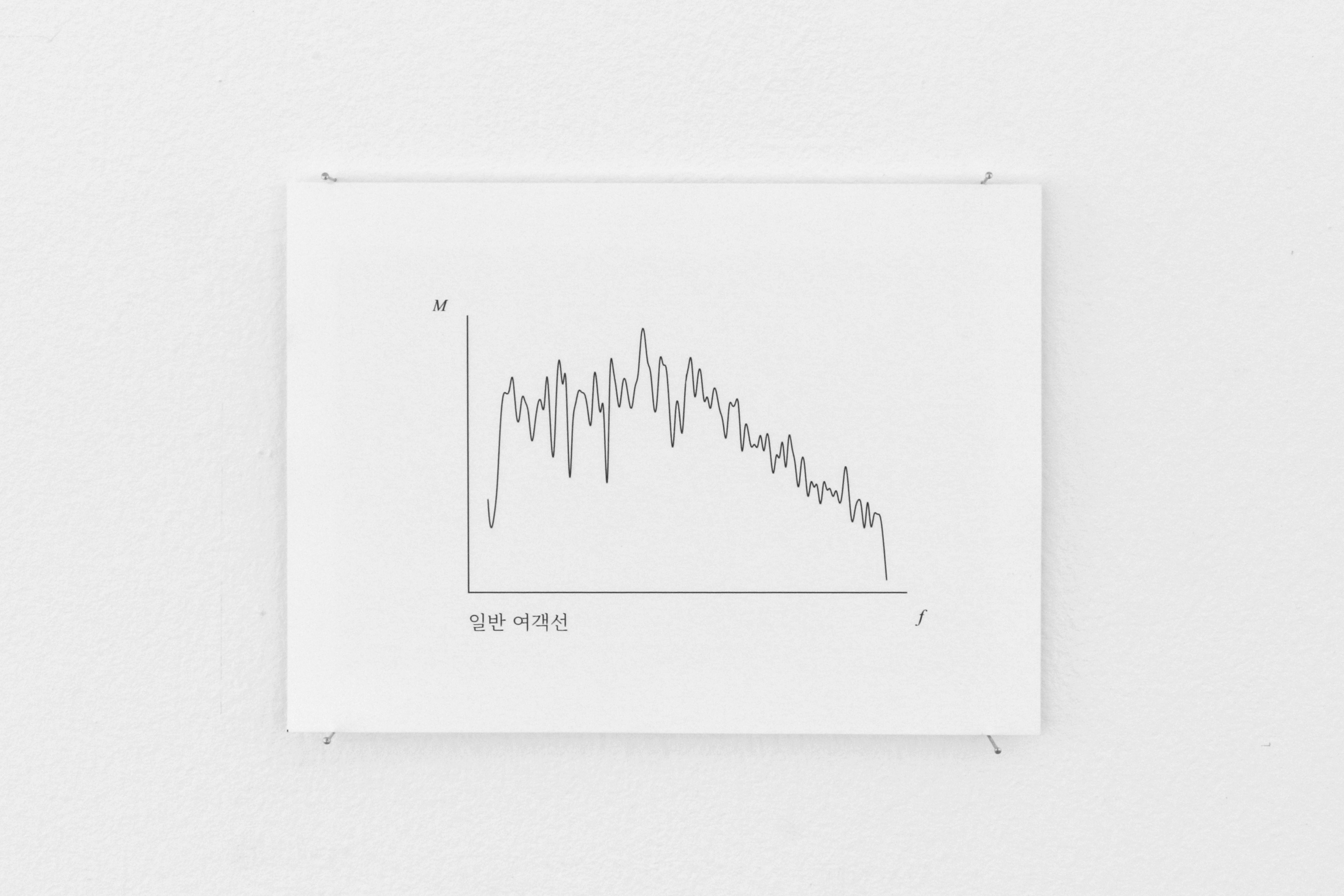
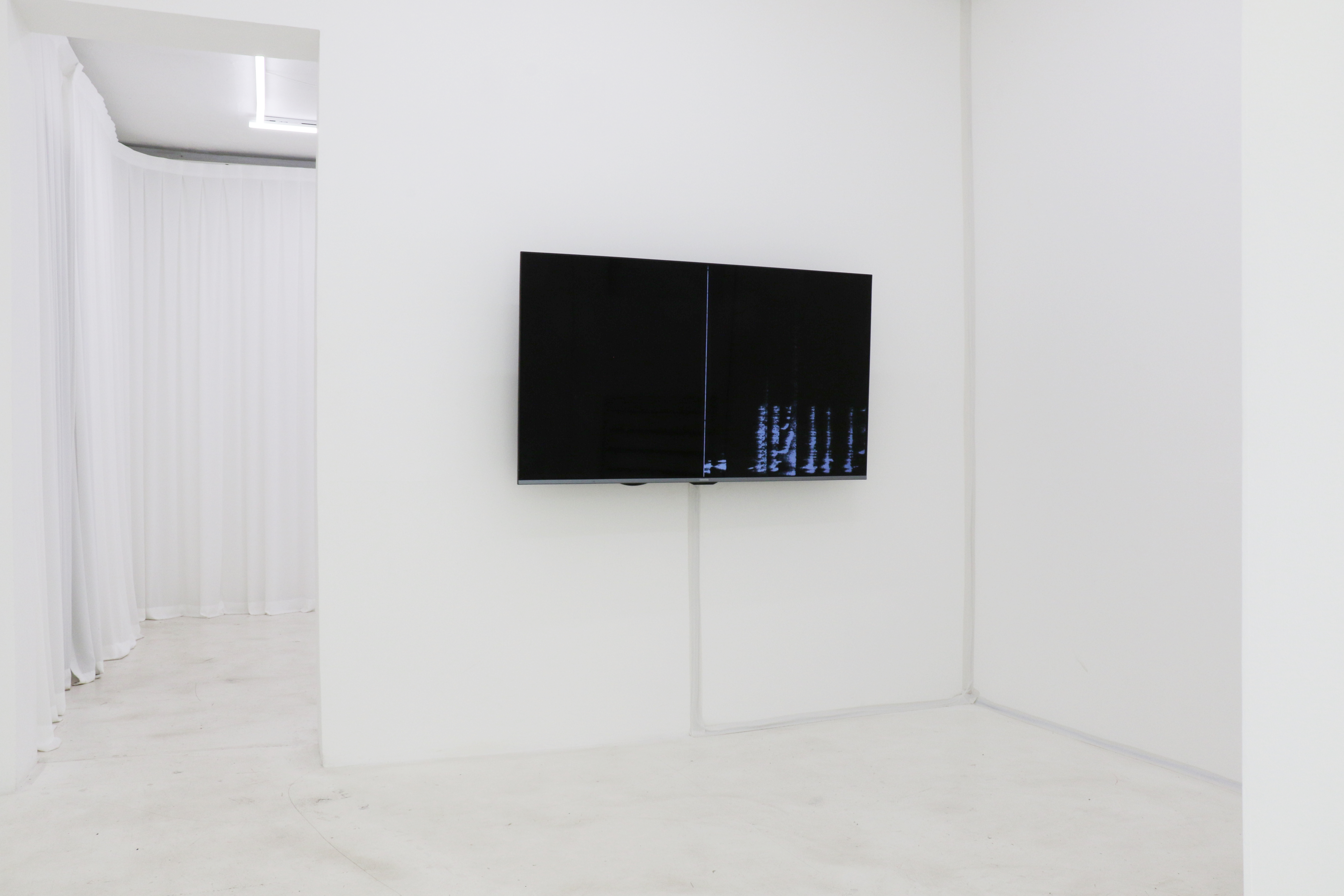

Realtime Graphic Simulation, Projector, Multi-channel Audio System, Realtime Vessel Tracking Software System, PC, Tablet PC
Print, Vessel Tracking Data
Print, Spectrogram of Marine Animal Sound
Realtime Audio Visualization, PC, Monitor
Artist : Minyoung Kim and Jaehoon Choi
Collaborating Engineer : Dohyuk Lee
Photo Credit : Minyoung Kim and C.ENTER
2022
Marine Animals rely heavily on sound for their everyday lives, including hunting, echolocation, communication, etc.
If our previous work <Big Dreams> (2021) focused on creating a transformational
experience of senses from visual to aural,
<Giant Whisper> attempts to show the ocean as this multi-layered space through an art exhibition format.
At the corridor right next to the main entrance, prints of spectrograms from marine animals and vessels are displayed.
In the main gallery, the visuals are generated based on the number of vessels at a certain location on the ocean in realtime.
The audience can move around the ocean using the tablet PC at the center of the gallery. The audio of marine animals is
spatialized, and the source position is located in the direction where there are the least amount of vessels. Also,
the audio gets filtered based on the number and types of vessels that are present on that spot. The more vessels are
present, the quieter the marine animal sound becomes. In the sub-gallery, the spectrogram of the audio from the main
gallery is visualized and the print of a heatmap that shows the vessel position data is displayed.
Through this, the exhibition places the ocean as a multi-layered space of marine life, sound, vessel, information
technology, and capitalism, while describing human activity in the form of silence. By transforming the sensory
experience through silence and the aural, this work affords the audience to listen to the ocean from a different
perspective by questioning the current relationship we have with the deep sea and suggests a new way of "unexpected
collaboration and combination"1 with it.